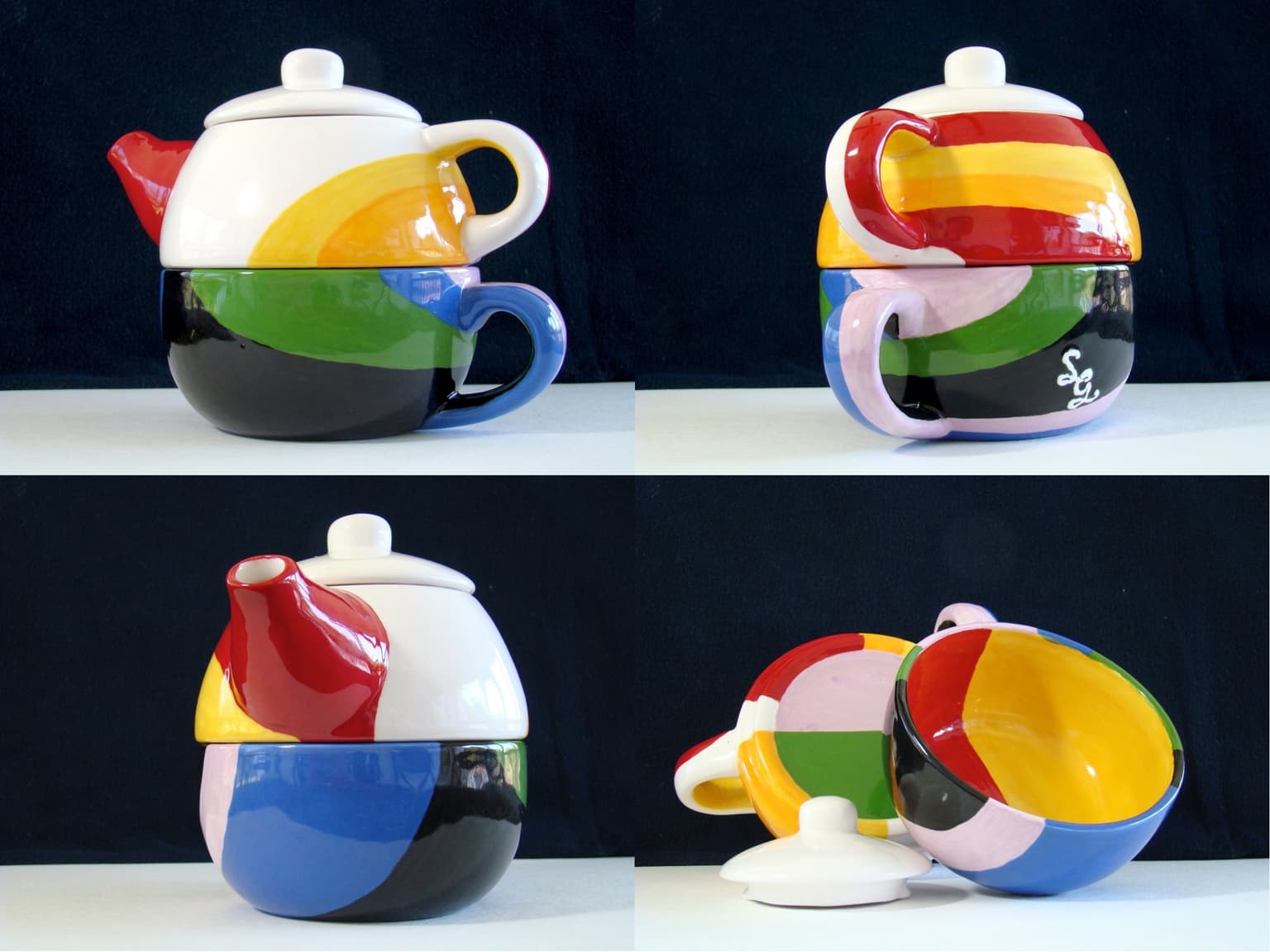2011 Joint Mathematics Meetings
Susan Goldstine
Artists
Susan Goldstine
Professor of Mathematics
St. Mary's College of Maryland
St. Mary's City, Maryland, USA
Statement
For me, the most exciting part of mathematics is communicating it to others. I am especially interested in models that make mathematical concepts tactile or visual. This passion has led me to many artistic projects in the course of my work as a math professor, and to some unexpected and delightful collaborations. In my past works, I have used yarn, fabric, thread, glass beads, dowels, paper, steel wire, copper tubes, hair elastics, pinecones, gel pens, and cookie batter, though not all at once.
Artworks

Tea for Eight
5" x 8" x 5"
Glaze on commercial ceramic
2010
The Four-Color Theorem says that we can color any map on a plane or sphere with only four colors so that no neighboring countries are the same color. On other surfaces, we may need more colors; on a two-holed torus, eight colors are sufficient, and there are maps that require all eight colors.
When this tea set is stacked with the handles aligned, it forms a topological two-holed torus with a map of eight countries, each of which touches all of the others, proving that eight colors are necessary. The teapot has white, red, orange, and yellow countries, and the teacup has black, green, blue and purple countries. At the seam between the pieces, each of the top colors touches each of the bottom colors.
On one-holed tori, such as the teapot and the teacup, seven colors are required for an arbitrary map. Unfortunately, a seven-color map is incompatible with the tea set's exterior pattern; when the tea set is opened, hidden colors give six-color maps of the teacup and the teapot.